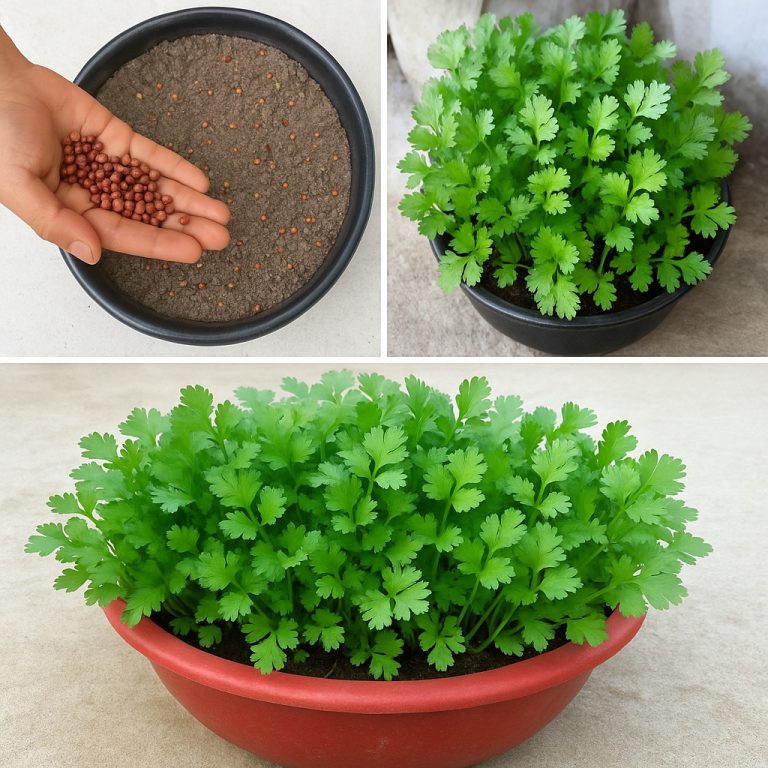ADVERTISEMENT
4. Apply a Thick Layer of Mulch
Mulching is an excellent way to conserve soil moisture and reduce evaporation. It also helps regulate soil temperature and suppress weeds.
Best Mulch Materials:
Straw or dried grass clippings
Wood chips or bark
Coconut husk
Shredded leaves
Apply a 2-3 inch layer of mulch around coriander plants, leaving some space around the stems to prevent rot. This simple step can reduce water evaporation by up to 50%.
5. Grow Coriander in a Shaded Area
Direct sunlight can cause coriander to dry out and bolt prematurely. Instead of exposing it to full sun, consider:
Partial Shade: Plant coriander in an area that receives 4-6 hours of sunlight rather than full-day exposure.
Companion Planting: Grow coriander near taller plants like tomatoes, peppers, or beans to provide natural shade.
Shade Cloth: Use a breathable shade net to protect coriander from extreme heat while allowing airflow.
A shaded environment helps coriander retain moisture and stay productive for a longer time.
6. Opt for Hydroponic or Aquaponic Cultivation
Hydroponic or aquaponic systems provide a sustainable way to grow coriander with minimal water use. These systems use water efficiently and recycle nutrients, making them ideal for dry climates.
How It Works:
Coriander is grown in a nutrient-rich water solution instead of soil.
A pump circulates water, reducing evaporation and wastage.
The plants absorb only the necessary amount of water, preventing overuse.
Aquaponic systems integrate fish farming, where fish waste supplies nutrients to plants, creating a self-sustaining ecosystem.
7. Harvesting and Maintaining Coriander Plants
Once your coriander is growing well, regular harvesting encourages continuous production. Here’s how to do it correctly:
Harvest leaves frequently by cutting stems from the outer part of the plant.
Trim no more than ⅓ of the plant at a time to allow regrowth.
For coriander seeds (coriander spice), let some plants bolt and produce seed heads.
Save seeds for replanting or use them for cooking.
Regular trimming prevents bolting and keeps your plants fresh and productive.
Final Thoughts: Effortless Coriander Gardening
Growing coriander without frequent watering is not only possible but also incredibly simple with the right techniques. By using water-retentive soil, self-watering systems, mulch, shade, and alternative growing methods like hydroponics, you can enjoy fresh coriander without the hassle of daily irrigation.
This water-saving method is perfect for busy gardeners, those in drought-prone regions, or anyone looking to grow herbs more sustainably. Try these techniques today, and soon you’ll have a thriving coriander patch that requires minimal effort yet delivers maximum flavor!
ADVERTISEMENT
